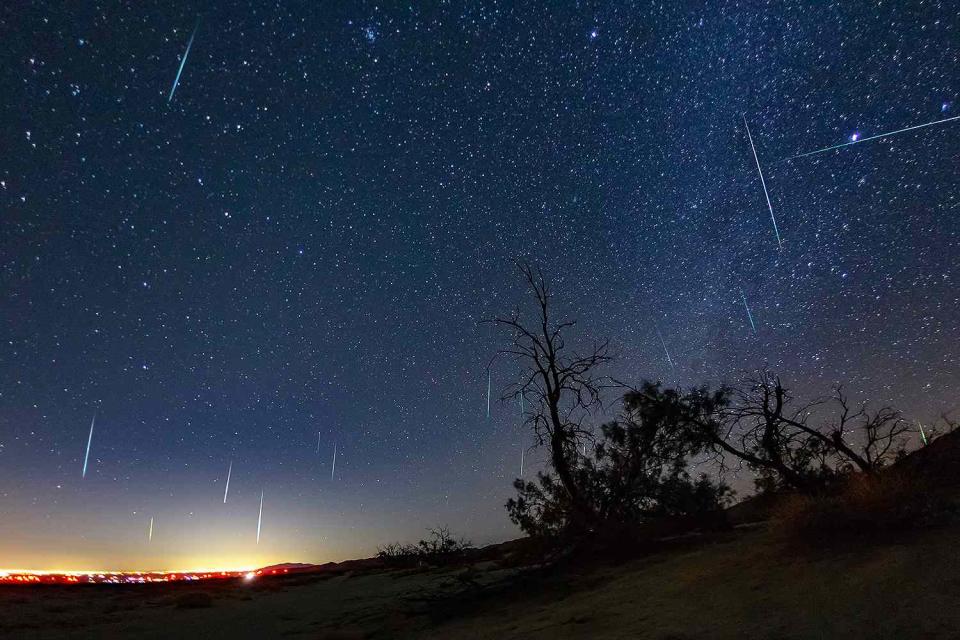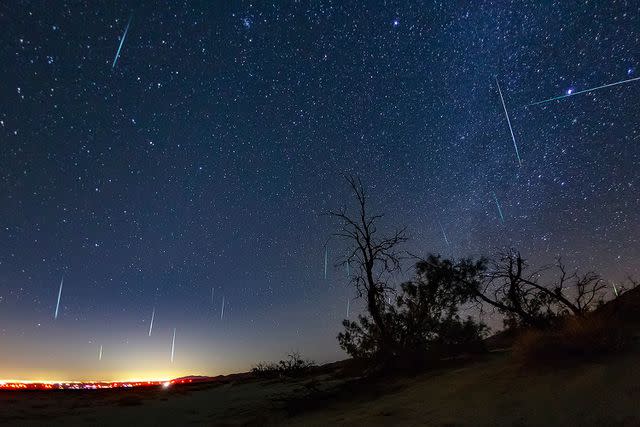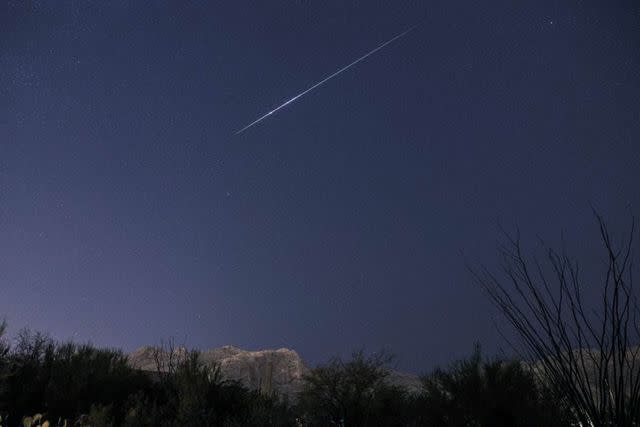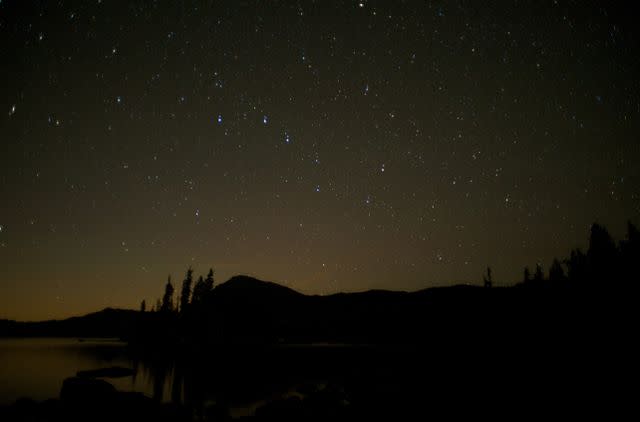All About the 2023 Ursid Meteor Shower, Including When It Peaks and How to Watch It
The annual Ursid meteor shower coincides with the Winter Solstice, peaking around Christmas Eve this year

Is it Dasher? Is it Prancer? No, it's an Ursid!
Don't mix up Santa's reindeer for a shooting star in December's night sky, as the Ursid meteor shower will be active around Christmas time this year.
The Ursids annually coincide with the Winter Solstice, which marks the shortest day and longest night of the year. NASA considers these "low-key" showers, with only a few meteors visible per hour depending on several factors.
Even under the best viewing conditions, though, the Ursids offer as many as five to 10 meteors per hour. "Bursts of 100 or more meteors per hour have been observed" in rare conditions, according to Earth Sky.
Still, the Ursids give eager stargazers an exciting opportunity to catch a dazzling shooting star whiz across the night sky (plus, an extra chance to make a wish this holiday season)!
If you're watching from the Northern Hemisphere, experts advise you start pointing your eyes to the sky at around 1 a.m. local time.
Read on for a complete guide to the 2023 Ursid meteor shower, including when it peaks and how to watch it!
Related: Everything to Know About the 2023 Winter Solstice
When does the Ursid meteor shower peak?

The annual Ursids are predicted to peak between Dec. 22 and Dec. 23, taking place just after the clock strikes midnight this year. Fortunately, this meteor shower is expected to remain active through Dec. 24, giving stargazers an extra chance to catch a glimpse of the spectacular sight.
Related: The Ultimate 2024 Horoscope Prediction Guide, According to Celebrity Astrologer Kyle Thomas
How to view the Ursid meteor shower?

Courtesy of Eliot Herman
A bright Ursid meteor seen on December 18, 2016 in Tucson, Arizona.Like all meteors, the chances of spotting one in the night sky depends on several factors. Light pollution, along with clouds and fog, are a few of the biggest obstacles that often hinder stargazers' view of spotting a shooting star.
The moon is another factor to consider when trying to watch a meteor shower, as its illuminated glow can act as light pollution as it radiates in the night sky. This isn't always the case, however, as it depends on the moon's phase the night of the shower.
Unfortunately for Earthlings, the expected peak of this year's Ursids coincides with a waxing gibbous moon. At 86% illumination, according to EarthSky, it "may interfere with the Ursids in 2023 until the moon sets about three hours before sunrise."
As for viewing tips from Earth, it's best to situate yourself in a dark location away from city lights. Depending on where you watch from in the world, be sure to dress appropriately if you plan to spend a long time outside. (Remember, the Ursids coincide with the Winter Solstice, so chances are it's going to be cold!)
Where does the Ursid meteor shower appear in the sky?

Meteors are the product of leftover comet particles and bits from asteroids. When these objects come close to the sun, they leave a dusty trail in their wake. Every year, these particles collide with Earth's atmosphere as they pass through, then disintegrate to form colorful streaks in the sky.
While comets are the true point of origin for meteor showers, for the casual viewer the meteor appears to originate from the "radiant," or the point in the sky from which the stars appear to shoot. For the Ursids, its radiant appears to derive from the Big and Little Dipper in the constellations Ursa Major and Ursa Minor (how this shower got its name).
If you're in the Northern Hemisphere, you're going to want to point your eyes in that direction — but don't only focus there. According to NASA's Bill Cooke, "meteors close to the radiant have very short trails and are easily missed, so observers should avoid looking at that constellation."
(Pro tip: Lie down on the ground, adjust your eyes to the dark sky and simply take its vastness in to better your chances at spotting a star!)
Related: Everything to Know About 2023's Perseid Meteor Shower, Including When It Peaks and How to Watch
What meteor shower comes after the Ursids?
After the Ursids, the Quadrantids becomes active on Dec. 28 and lasts through Jan. 12, 2024. Its predicted peak is between Jan. 3 and Jan. 4, 2024.
For more People news, make sure to sign up for our newsletter!
Read the original article on People.

